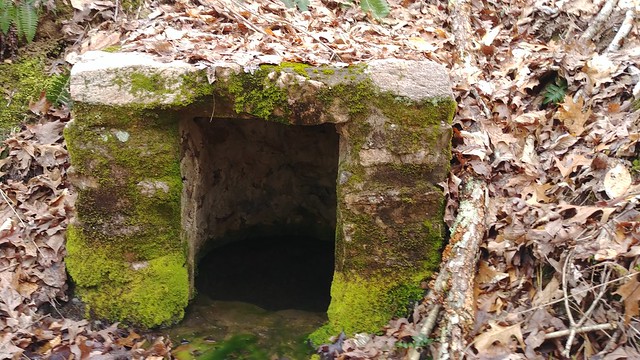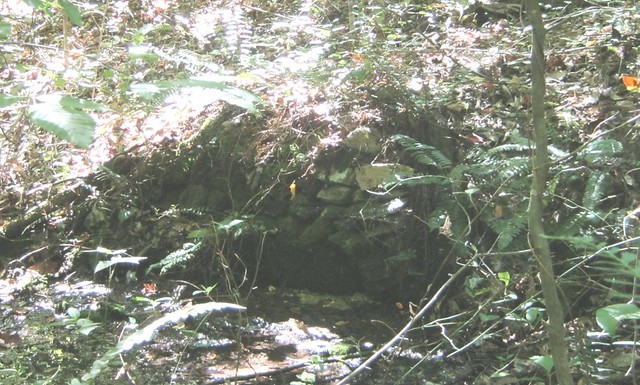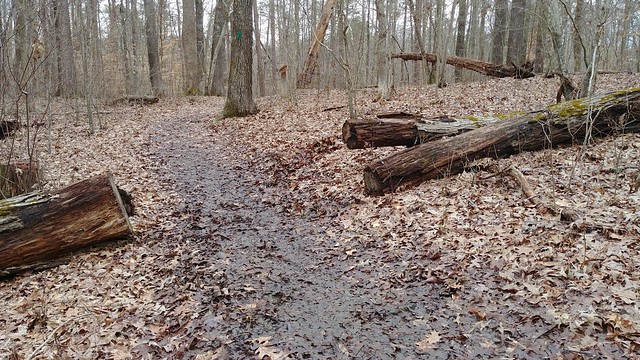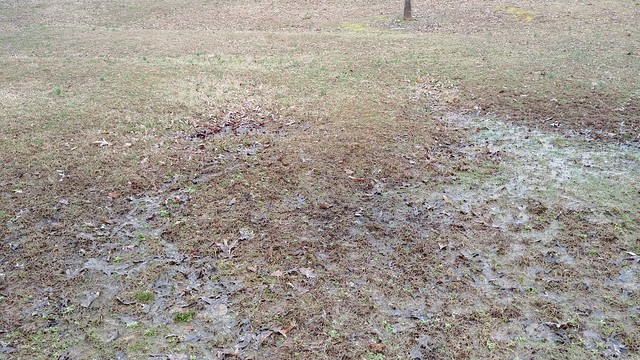Read Our Blogs
Life to Springs
An interesting result of the frequent rains in the Bear Creek Lake State Park area since the summer of 2018 has been the renewal of water springs seeping up from underground just above the bedrock layer.
The water is a cause and effect of the geology that defines a local ecosystem, and in some cases can act as a record of human impact.
This spring was most likely framed in the late 1930s when Bear Creek Lake was being developed
Go to any grocery store and you will find a selection of natural, mineral, purified, energy, or similarly labeled water. Every living thing needs water. In the outdoors, our water sources can be elusive, or fail. Overuse by human demand, or environmental or climate change, can have an impact on a spring's viability.
Some springs go dormant, and only reveal themselves when that groundwater is replenished. With that in mind, I rambled to visit newly regenerated springs, as well as dip back in time. Some may seem inconsequential, or, to an unobservant eye, invisible, but they all tell a story wetter than water.
Some springs welling up in developed areas are considered a nuisance. Homeowners desiring a perfect lawn would wish then gone - but be careful what you wish for. Although the surface of the earth is mostly covered in water, only about 1 percent of all the earth’s water is available to us for use as fresh water. We should try to appreciate nature’s quirks.
COLEMAN FONT
The Coleman Font
The rocks pictured are not a natural formation. Water still trickles from this font that may have served as a water supply for the plantation along Bear Creek that was owned by the Coleman family from the late 1700s until the late 1800s.
Sometimes a renewed intermittent spring just appears for a while then fades. This one on the Channel Cat Trail is at the top of a hill. Not all intermittent springs are in low spots.
We often think that water was plentiful and healthful in the days gone by, and that only lately has human activity impacted water quality and caused degradation of the environment. By the 1900s in the central piedmont, agricultural practices had led to erosion that impacted streams and rivers. Natural springs were often looked to as healthy alternatives, and even as commercial concerns. The Farmville lithia springs water was bottled and sold widely for its health benefits.
Closer to the park was Lucyville. This was a mixed-race community who relied on the sale of water and access to their mineral springs (yes, think spa) to provide income and sustainability. It’s thought that there were seven springs to draw from. Some have said that the failure of the springs in the early days of the 20th century contributed to the demise of the community, whose lands are now a part of the Cumberland State Forest.
LUCYVILLE SPRING
Two springs that may possibly have been the ones that watered Lucyville. One is more of a font, the other square one would have served more as a spring well, and may even have had a covered area, or spring house, over it.
Time shadows many of the developed springs from long ago. They seem to blend in with the surrounding vegetation, so keep your eyes open when walking in the forest and you might see one. Most will be a square shape, and nature is usually not a square shape.
Even if we don’t all rely on springs for our water supply, how we use the land and treat our soil and groundwater impacts our water just as much as climate change and natural weather cycles. If we degrade the vitality of our water sources, we degrade ourselves.
(Editor's Note: Never drink water from an unknown source, bacteria and pollutants may be present and is only safe to consume if boiled.)
CHANNELCAT SPRING
The Channelcat spring
Just like today, a good clean water source was an important part of improvements to the land for human use. Small structures would define the spring and make it easier to get the water out without sediment.
DAY USE SPRING
Day use spring
This spring in the park’s beach area has caused alarm in many a new ranger who feared a broken waterline. It barely rises for a brief period each year, but in 2019 made a larger appearance. Maybe it was just reasserting nature's role as the reason for public lands.
Plan your visit
Learn more about Bear Creek Lake State Park's cabins, camping, hiking, fishing, water recreations and fun nature programs here. The park is located about 4.5 miles northwest of the town of Cumberland, just one hour west of Richmond Virginia.
For overnight reservations call 800-933-7275, or click here to reserve online.
If you have read the article and have a question, please email nancy.heltman@dcr.virginia.gov.
Search for blogs
By Park
Categories
Cabins
Camping
Fishing
History and Culture
Other
Programs and Events
Trails
Volunteers
Water Fun
Archive
2024
2023
2022
2021
2020
2019
2018
2017
2016
2015
2014
2012




















